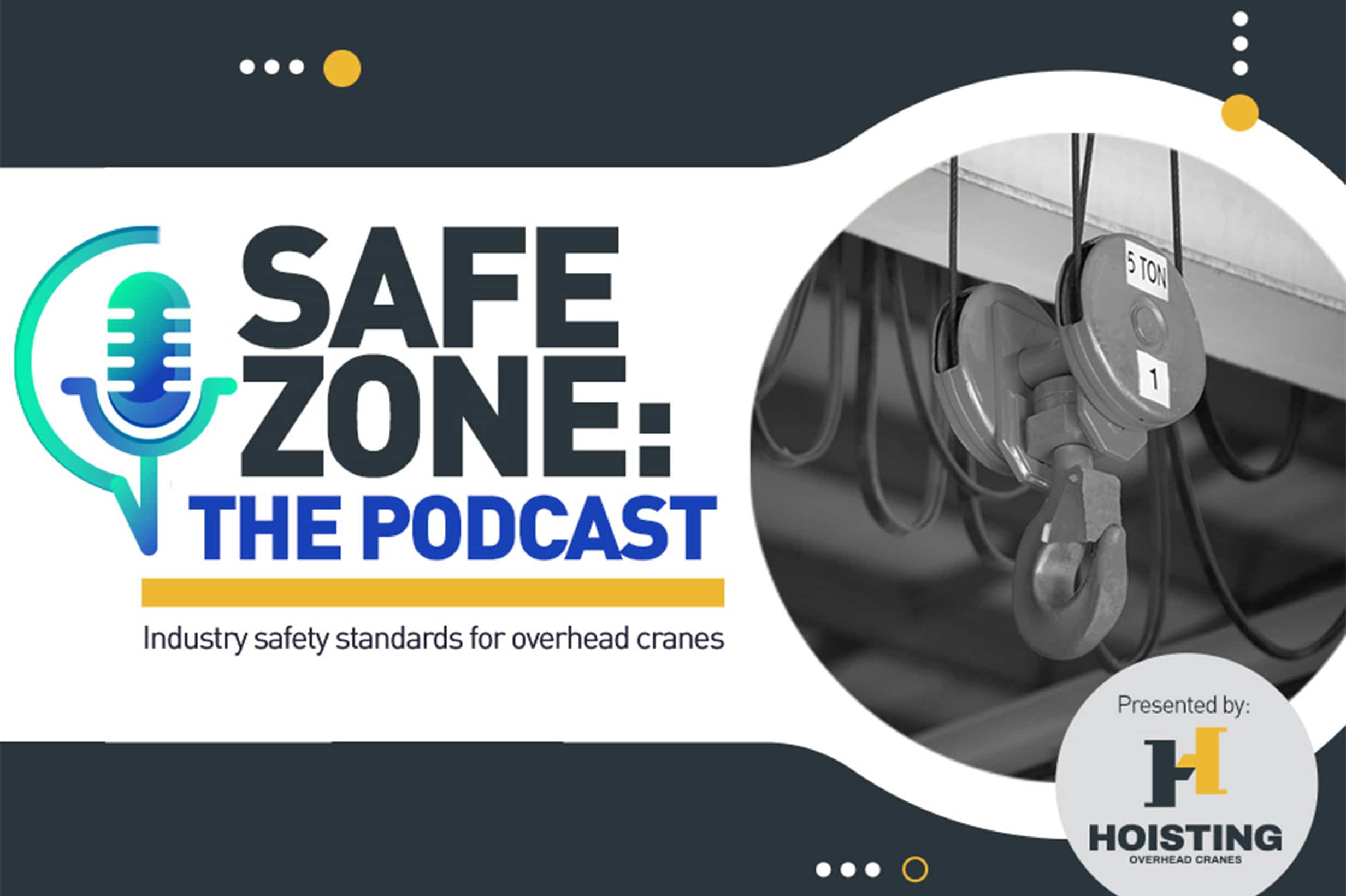In the June 2021 episode of the Safe Zone podcast, Marcel Vander Wier of OHS Canada spoke with Hoisting Ltd representatives Doug Clark (President and CEO) and Kevin Toms (Service Manager) to discuss industry safety standards for overhead cranes. This type of equipment plays a significant role in many companies’ production capabilities and can
become an operational risk without compliance-based inspection.
Below are some of the safety, compliance, and inspection topics covered in the episode.
What does your inspection process look like?
We review the overhead crane’s log book, original equipment manufacturer (OEM)
owner’s manual, and engineering documents with the client to understand the crane’s
background and history.
Then we inspect the overhead crane to ensure it’s compliant with provincial governing
bodies and that employees are safe while using it.
What are some common inspection issues with overhead cranes?
- A company might operate a high number of overhead cranes within a facility that isn’t
designated for that many. - Overhead crane, runway, and facility builders often don’t communicate properly during
construction, leading to incompatibility in the final product. - Inspections aren’t happening as often as required by the OEM, whether they’re pre-use,
periodic, or annual inspections. - The overhead crane’s log book is no longer available, leaving the equipment owner
without a record of the crane’s full inspection and maintenance history. - Regular equipment operators don’t have the right training and certification.
What should a company look for in its overhead crane technicians?
- Experience: The technician should have the required industry-standard 10,000 hours
of on-the-job experience. - Education: There’s no journeyman ticket for overhead crane repair, but technicians
should have other extensive training and possibly another industry ticket to ensure they
understand the equipment. - Documentation: The technician should provide a complete report, review it with the
equipment manager, and provide solutions. This report should match up with the OEM
owner’s manual for the equipment. - Compliance: The technician should focus on equipment compliance so your company
avoids unplanned downtime or work stoppage and ensures safety and productivity.
Listen to the full podcast episode on OHS Canada.

